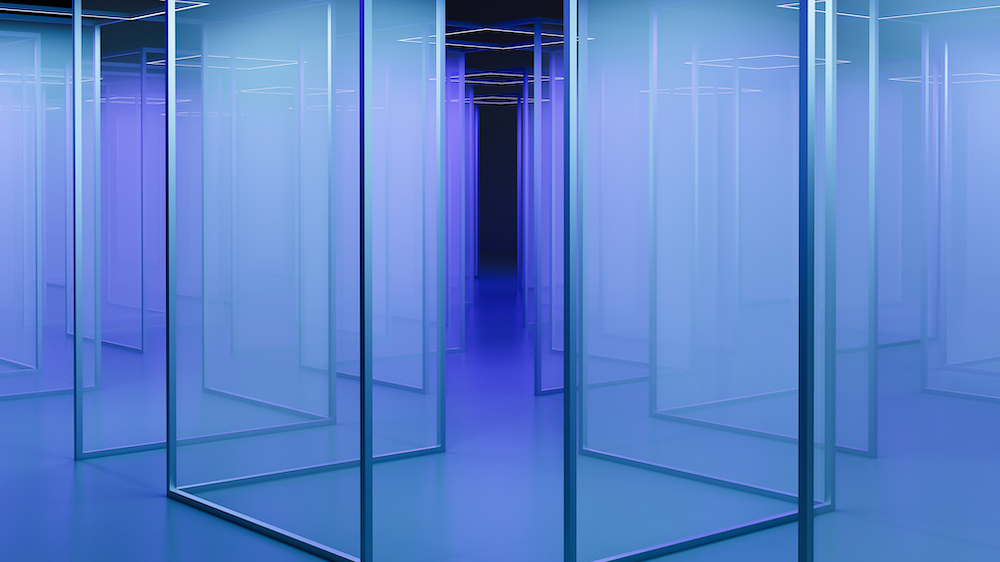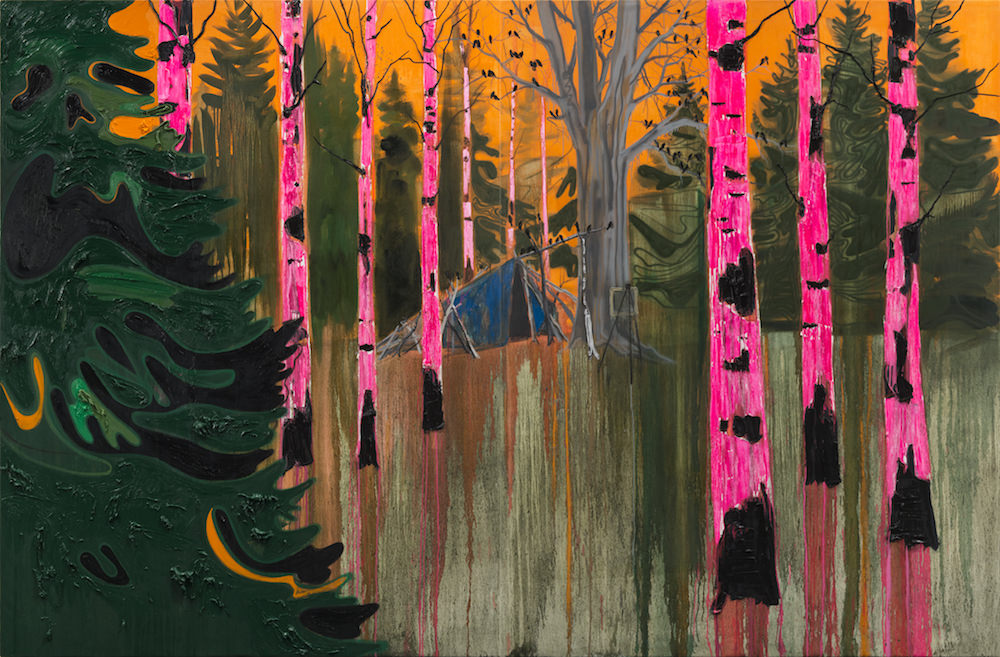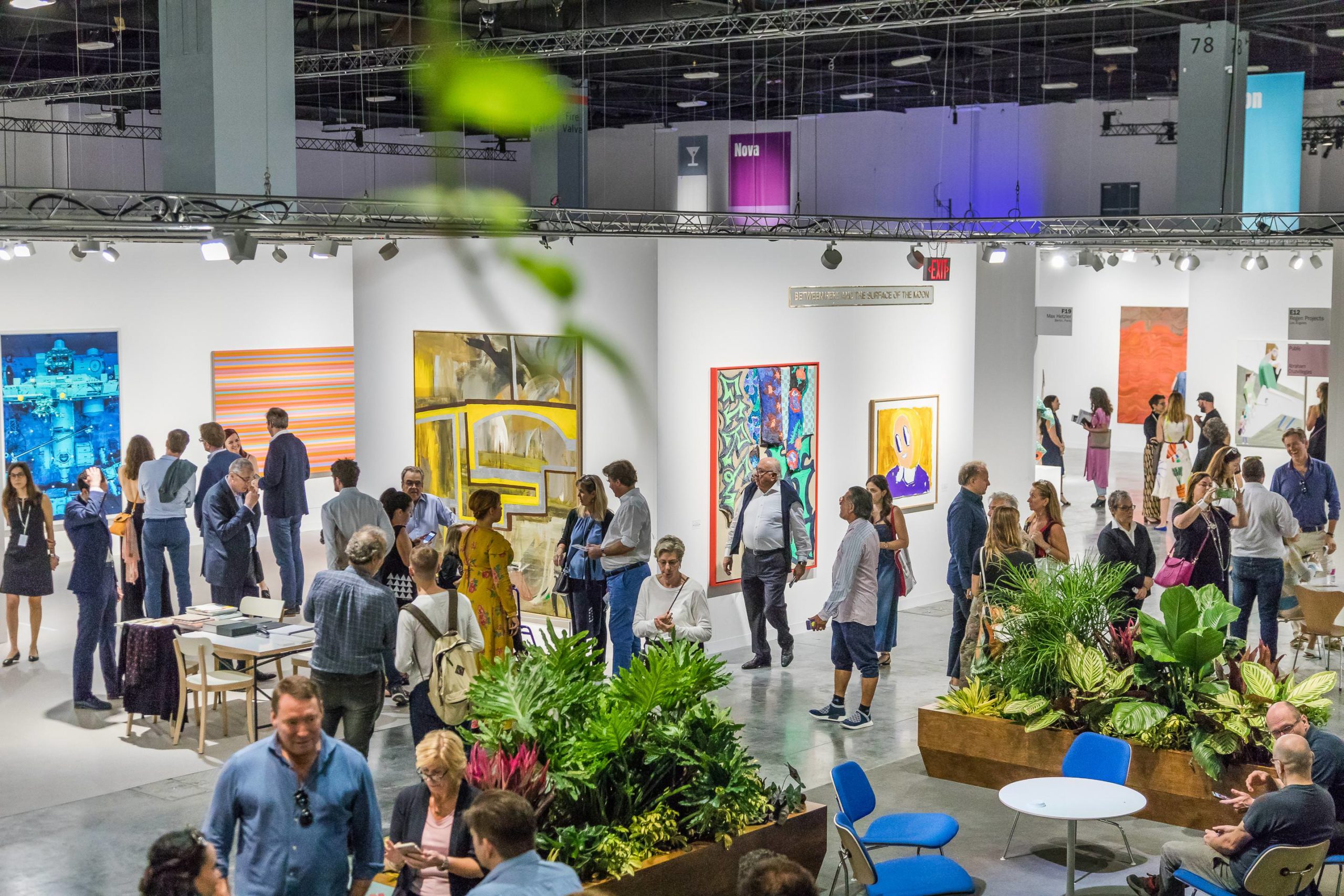Dutch artist Theo Jansen finds the wide, flat expanses of Miami Beach remarkably similar to those of the seaside district of his native Scheveningen, the Hague, where, for more than two decades, he has created an evolving species of lifelike forms he calls Strandbeests (“beach animals”). The structures, made from simple materials like PVC pipes and plastic bottles, use—and harness—wind energy and other elements to move on their own. Many-legged and delicate, the outsize creatures “walk” along the beach in an eerily lifelike fashion, mimicking the movements of insects or the sidelong gait of sand crabs. Jansen’s Strandbeests have developed over the years from a series of rudimentary structures to their current, deceptively sentient form––some have the ability to change directions when “sensing” their approach to water or can autonomously anchor themselves in the sand in the face of an oncoming storm.
The Strandbeests were first conceived in 1990 in an article Jansen published in the Dutch newspaper De Volkskrant, in which he imagined a species that would roam the Dutch coastline piling up sand along its dunes in a mechanized effort to stabilize and protect the landscape against the forces of global warming. Miami Beach—a city facing threats to infrastructure and clean water sources due to rising sea levels—is a fitting stage for Jansen’s preview presentation of the Strandbeests that precedes his first US tour, which is organized by the Peabody Essex Museum (PEM) in Salem, Massachusetts, and will travel from there to Chicago, San Francisco, and New York.
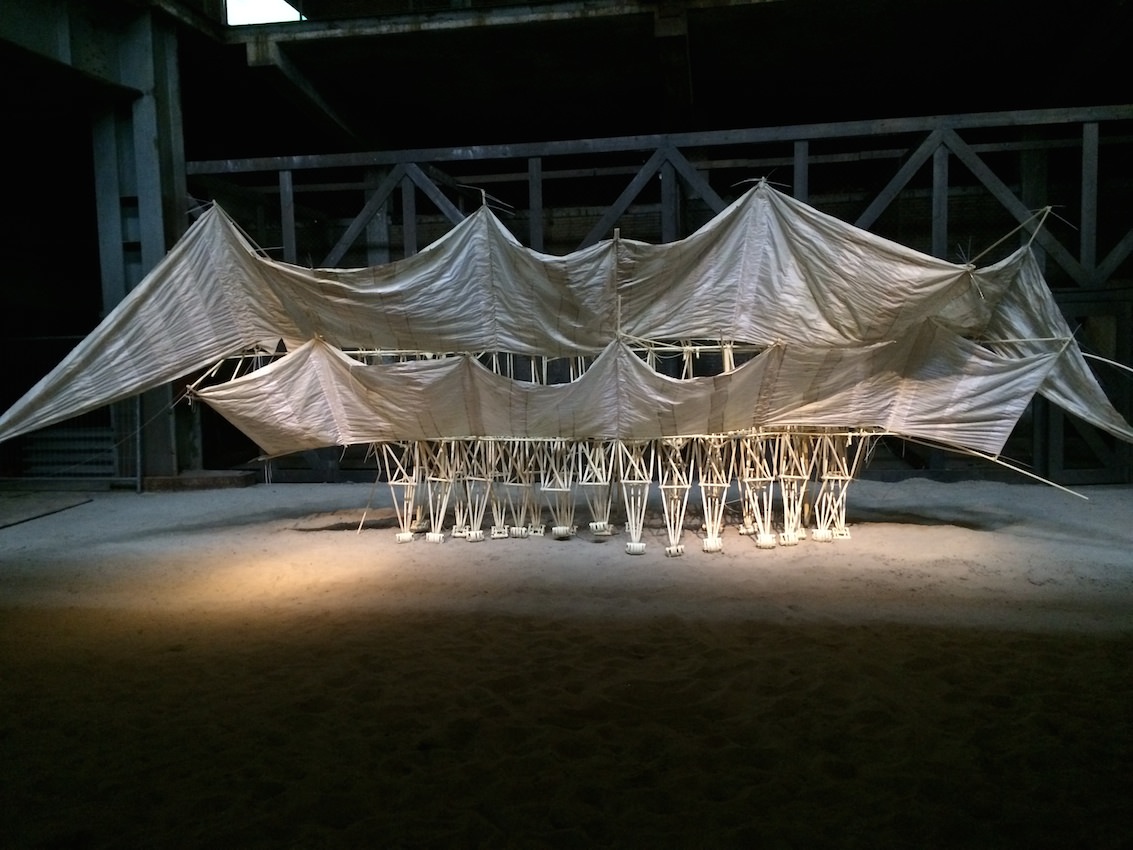
Theo Jansen
Each day from December 4 to 7, Jansen will lead a group of Strandbeests in demonstrations that are open to the public on the beach between 21st and 22nd Streets. Although these actions are weather permitting, the Strandbeests no longer rely on specific wind conditions, as one of their more recent adaptations is the development of “wind stomachs”—a primitive, pneumatic system made from plastic bottles—that allow the structures to use stored-up wind energy for locomotion even when the torque of the natural conditions is not optimal.
Miami Beach may appear to be similar to the beaches of Jansen’s native Scheveningen, but the landscapes differ in their ecological and cultural history. While parts of Miami Beach are man-made (built atop dredged landfill from Biscayne Bay in the 1920s), the Dutch coastline has a history that dates back to the thirteenth century and has been immortalized by Vermeer and other Dutch master painters. PEM curator Trevor Smith comments: “there is a long history of art that plays on the tension between representing and idealizing a landscape, or how often human transformation of the natural landscape in time becomes naturalized.” Standing on Miami Beach, one finds it hard to imagine the landscape is in any way man-made.
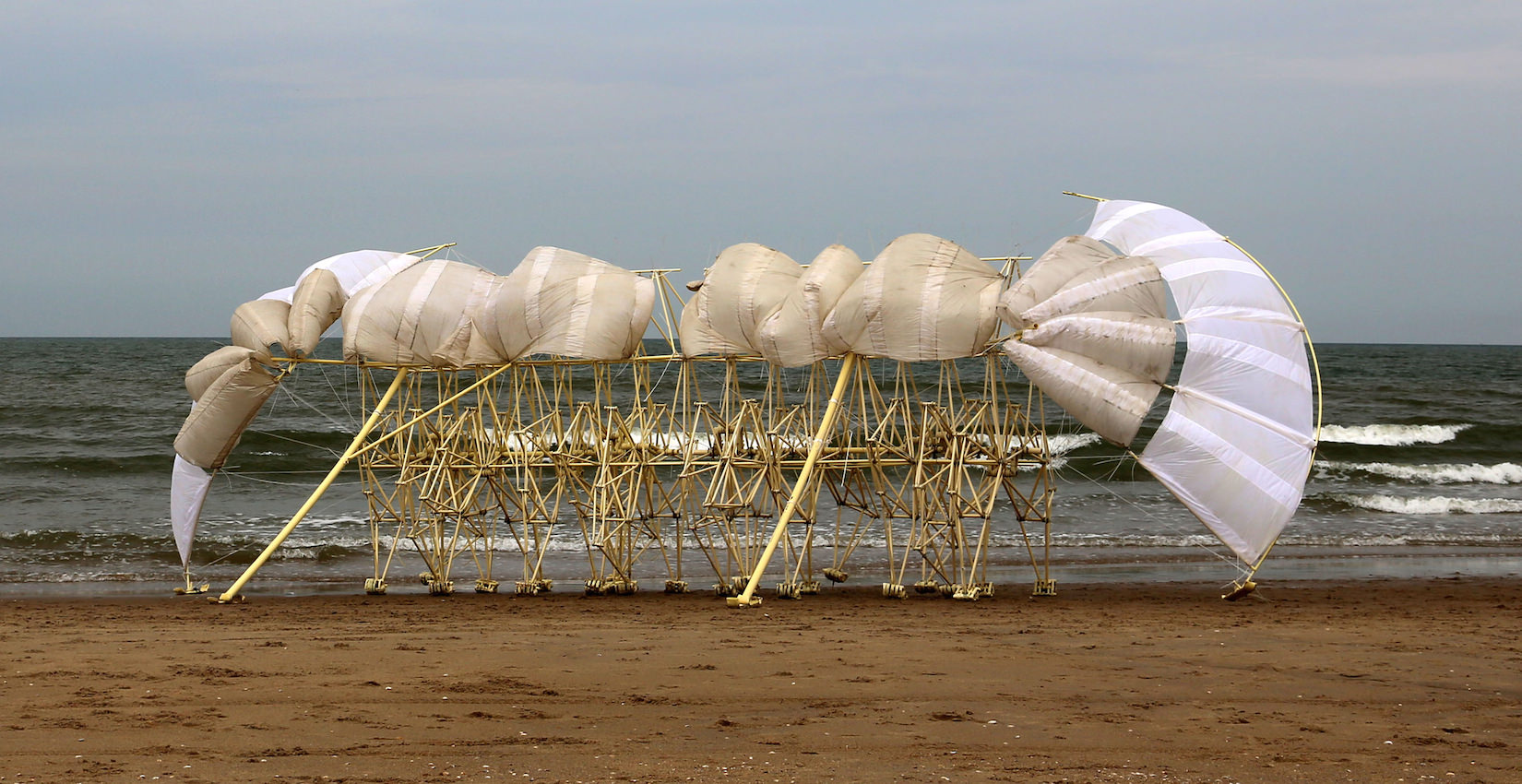
Apodiacula with Sails
Photo courtesy of PEM – Priscilla Danforth
Likewise, first-hand experience of Jansen’s Strandbeests resists comprehension of their synthetic origin, as they trip along the sand with apparent autonomy and ease. “In this way,” says Smith, “Jansen’s renaissance imagination is utterly compelling. He brings together the worlds of art, science, and storytelling in a way that connects these practical and speculative realms of thought.”
This preview presentation is organized by PEM in partnership with Audemars Piguet and, in addition to Jansen’s demonstrations on the beach, features an exhibition that includes a faithful reproduction of the artist’s Dutch workshop, an installation of some of the most recent Strandbeests, including the 42-foot-long Animaris Suspendisse, and striking images of the creatures in their natural habitat, captured by photographer Lena Herzog. Alongside Theo Jansen’s Strandbeests, Audemars Piguet is presenting a selection of historic and contemporary timepieces in the Art Basel Miami Beach Lounge.
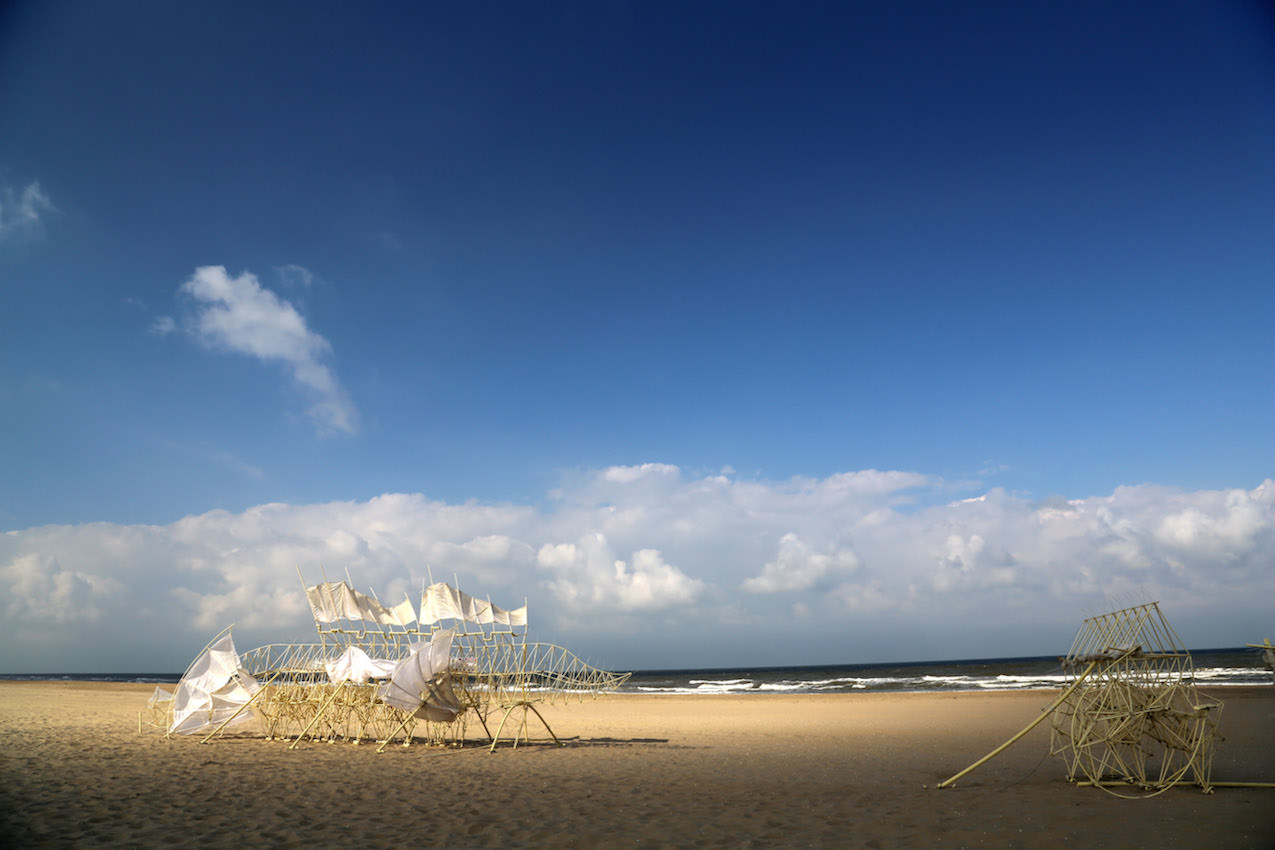
Theo Jansen
Strandbeests will be on view at Miami beach Oceanfront 21st and 22nd Streets, December 4-7.
httpss://www.youtube.com/watch?v=Ctca5fGTudg&feature=youtu.be
This article was previously published in Whitewaller.




